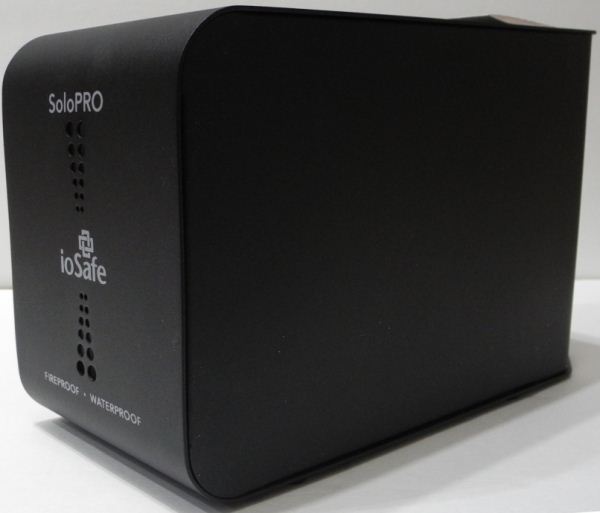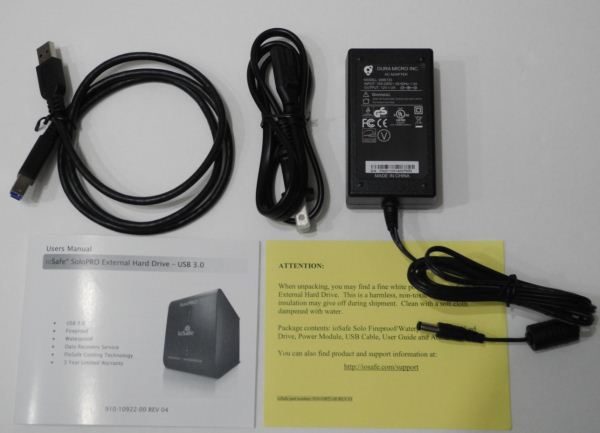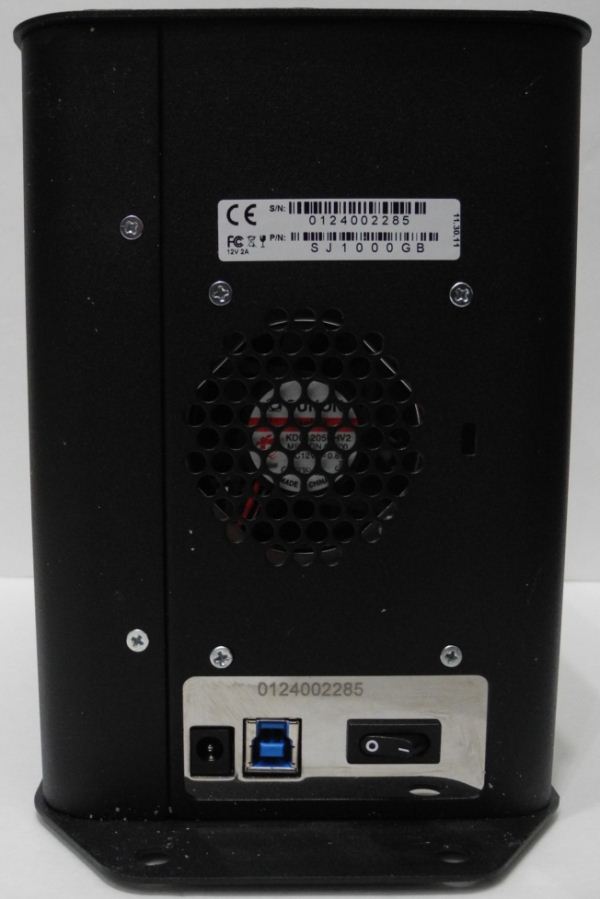ioSafe SoloPRO: Disaster Proofing Your Storage Needs
by Ganesh T S on April 9, 2012 6:00 PM EST- Posted in
- Storage
- IT Computing
- ioSafe
Consumers understand the importance of keeping their documents and other material possessions safe from unexpected disasters. Towards this, many invest in fireproof and waterproof safes. However, as the digital economy grows, many of the possessions such as documents and photo albums are in terms of bits and bytes, rather than tangible things which can be placed in safes. This brings to fore the necessity to find a disaster-proof safe place for those bits and bytes in both personal and business settings.
Storage media (hard disks, in particular) are quite sensitive to environmental conditions, and protecting them from disasters such as fires and floods is an interesting problem. ioSafe has been in the business of selling disaster proof storage solutions for the last 7 years. Their products have been well-reviewed and their CES demonstrations have always drawn a large audience. We received a ioSafe SoloPRO 1TB USB 3.0 version to take out on a test drive. The unit protects data from loss up to 1550°F for 1/2 hour as per ASTM E119 and it is also waterproof upto 10 ft. for 72 hours.
Package Contents and Initial Impressions:
The ioSafe SoloPRO package was surprisingly heavy, coming in at 18 lbs. In addition to the main unit, it came with a 24 W power adapter, a USB 3.0 cable, a user manual and a note about the possibility of fireproof insulation powder being present on the external surface of the unit.
The main unit alone weighed in at a hefty 15.5 lbs. Its dimensions are 5" x 7.1" x 11". The rear side of the main unit has an explicit on-off switch, the USB 3.0 connector and the power inlet. There is also a fan in the unit for active cooling of the hard drive.
On connecting the unit to the computer, we found that the unit internally uses a Seagate Barracuda 7200 rpm 1 TB hard drive with a 32 MB buffer. The USB 3.0 port is provided by JMicron's JMS539 SuperSpeed USB to SATA II 3.0G bridge.
Those are the tangibles in the shipment. What else does one get? The SoloPRO unit comes with a Data Recovery Service (DRS) package, 1 year of which is included in the purchase price. The SoloPRO allows for this to be upgraded to either 3 or 5 years at an extra cost of $50 or $100 respectively. The warranty in the US market is for 3 years, but a 5 year upgrade to DRS automatically extends the warranty to 5 years.
The DRS provides for one instance of no-questions-asked data and hardware recovery. The user mails the affected unit back to ioSafe (shipping paid by ioSafe) and the recovered data is loaded onto another ioSafe unit. In case the data is not recoverable through ioSafe's usual procedures, the company provides upto $2500 in coverage for data recovery by a third party.
Consumers have to explicitly register online with ioSafe for DRS to be enabled on their unit. There is a lot of information (some of which is unnecessary, in our opinion) that needs to be entered while registering. Upon successful registration, one is also provided with a single user license for Genie Timeline Pro, a software to aid in backups (say, to a SoloPRO). The software costs $59.95 when bought standalone, but is complimentary with the purchase of an ioSafe SoloPRO.
The ioSafe SoloPRO 1TB version with USB 3.0 support comes with a MSRP of $349.99, a premium of more than $200 over a comparable non-disaster proof version. What is the technology that is worth this premium? Let us see in the next section.



















34 Comments
View All Comments
Coup27 - Monday, April 16, 2012 - link
Hi Rob,It's nice to have a CEO, or even a company rep in these comments. I don't know if you are still checking these comments but if you are, is there a reason why there is no NAS version of this product? USB obviously has cable length limitations and if you wanted to secure the ioSafe somewhere on-site out of the practical reach of theft, the chances are it's going to be more than 5M away from my expensive server.
My company is only small, about 30 staff with 10 computer based users. Today I have spent longer "discussing" the my options for backing up my IT provider than I did talking about the actual server implementation and roll out. Every option we discussed had a pit fall and we were left with the classic and incredibly frustrating "2 x external drive shuffle alternating once a day/week by a member of staff who someone then takes home" [insert expletive here]
As has been mentioned already, cloud backup completely fails when backing up considerable data, especially large email repositories.
Regards
robb.moore - Monday, April 16, 2012 - link
Hi Coup27-At ioSafe we use a Synology NAS (RAID, NAS, Private Cloud, Etc) with an ioSafe SoloPRO as the backup target for the NAS using the eSATA port on the back of the NAS. This will allow you to place the ioSafe anywhere on the network (wired or wireless).
This works really well imo for the small business as there's no backup software to install on the clients if you're just after protecting the NAS. If you'd like to image the entire OS for the attached clients, you can either buy an ioSafe for each computer user and image it that way - reducing the data pushed across the LAN (this is what we do at ioSafe). Or you can image the user's hard drives across the LAN to the NAS which in turn backs up to the ioSafe (this is what I do for my home computers).
Additionally, you can layer in whatever offsite strategy you'd like if you feel you need it at this point.
We're also working on some other NAS solutions that we'll be announcing later this year. Hope that helps.
Robb Moore
CEO
ioSafe
Coup27 - Thursday, April 19, 2012 - link
Hi Robb,Unfortunately having to rely on a seperate NAS to add network capabilities adds a significant cost to a quite reasonably priced item.
When I can eventually afford my own house I would certainly consider a NAS ioSafe to place in my loft as a secure backup. This would be inpractical to be taken during a theft, and would survive water and fire damage. Obviously that would not include an off-site backup but I'm not sure how practical that is for a domestic user with TB's of data. I think a NAS ioSafe would be an excellent overrall solution and hope so see them soon!
Cheers
glugglug - Monday, March 4, 2013 - link
Can the ioSafe be opened up and the drive inside it replaced with a larger one?Will opening it break some seals required for the disaster proofing?